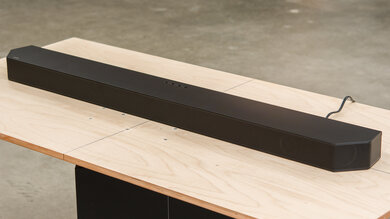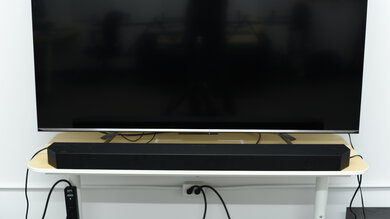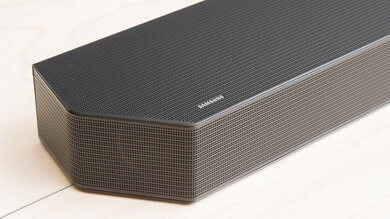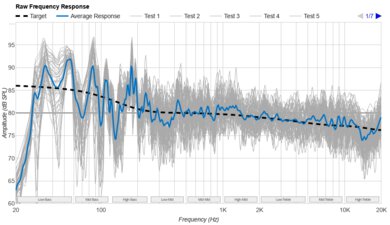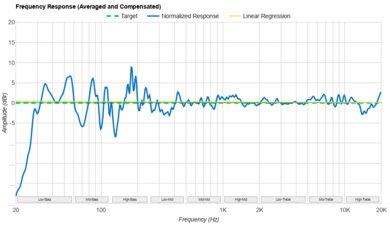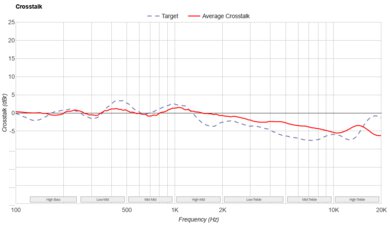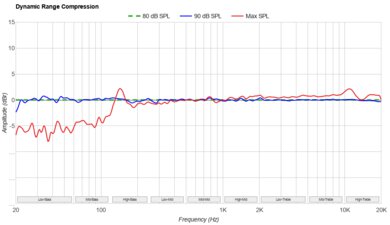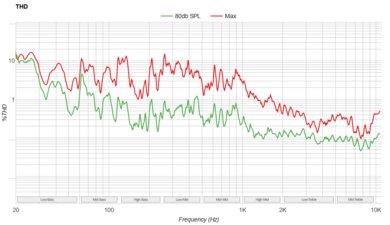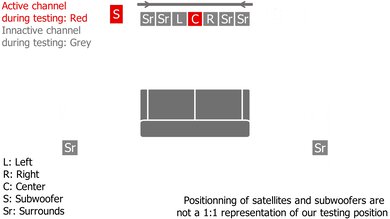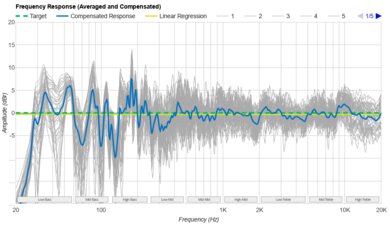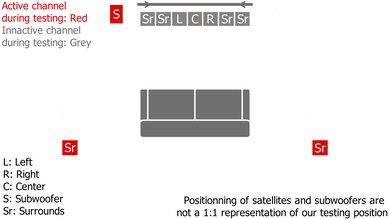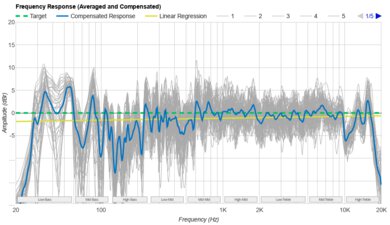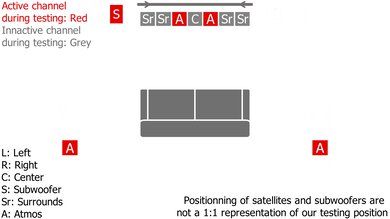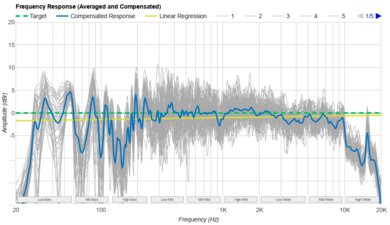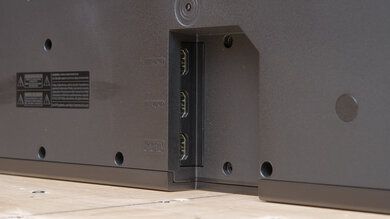The JBL Bar 5.0 MultiBeam is a compact 5.0 setup from 2021. It comes with JBL MultiBeam Technology, advertised to help create a wider soundstage by bouncing sound off your walls. With its room correction feature, it has a boxy sound profile that adds punch and boom to your mixes but struggles to reproduce a deep low-bass. Also, it supports Virtual Dolby Atmos, meaning that it can only play Atmos content when downmixing it to surround content, which isn't as immersive.
Our Verdict
The JBL Bar 5.0 is decent for mixed usage. With its room correction feature turned on, this soundbar offers a boxy sound profile out-of-the-box, which adds a little extra punch and boom to your audio. However, it struggles to reproduce a thumpy low-bass, so you don't feel the rumble in bass-heavy music and action-packed movies. It supports surround and Dolby Atmos content, but unfortunately, it doesn't offer a very immersive performance.
- Bass adjustment feature.
- Gets pretty loud.
- Lacks low-bass.
- No dialogue enhancement feature.
The JBL Bar 5.0 is decent for dialogue-centric content like TV shows. Thanks to its dedicated center channel and balanced mid-range, voices are reproduced clearly and accurately. It also offers lots of wireless playback options so you can stream podcasts and audiobooks from your phone to the bar. It comes with an auto-volume mode to help balance the volume level between programs, but unfortunately, it lacks a dialogue enhancement feature.
- Auto-volume mode.
- No dialogue enhancement feature.
The JBL Bar 5.0 is decent for music. It comes with a room correction feature called Automatic MultiBeam Calibration that adjusts audio reproduction based on the room you're listening in. With this feature on, it offers a boxy sound profile that adds extra punch and boom to your mixes. However, it struggles to reproduce a deep, thumpy low-bass. There's a bass adjustment feature to help you customize its sound, but it lacks more robust sound customization options.
- Bass adjustment feature.
- Gets pretty loud.
- Lacks low-bass.
- No graphic EQ.
The JBL Bar 5.0 is decent for movies. Out-of-the-box, it has a boxy sound profile that adds a little extra punch and boom to your favorite movies. However, it struggles to reproduce low-bass, so you don't feel the deep rumble in action-packed scenes. It supports surround content, but it doesn't offer very impressive performance. Also, it has to downmix Dolby Atmos content into surround, which isn't as immersive.
- Bass adjustment feature.
- Lacks low-bass.
Changelog
- Updated Dec 12, 2023: Added market comparison with the Sennheiser AMBEO Soundbar Mini in the Sound Enhancement Features box.
- Updated Mar 27, 2023: Added cable lengths to In The Box.
- Updated Mar 22, 2023: Converted to Test Bench 1.1. With this update, we've added a Mounting test and added information aboutSubwoofer Output, Spotify Connect, and Microphone Mute.
- Updated May 28, 2021: Review published.
Check Price
Differences Between Sizes And Variants
The JBL Bar 5.0 MultiBeam comes in 'Black', and you can see the label for the model we tested here.
If you come across another version of this soundbar, let us know in the discussions, and we'll update our review.
Popular Soundbar Comparisons
The JBL Bar 5.0 MultiBeam is a 5.0 soundbar that supports Virtual Dolby Atmos, so it has to downmix Atmos content into surrounds to play it. It has a boxy sound profile out-of-the-box, and it comes with an Automatic MultiBeam Calibration room correction feature. It also offers lots of wireless playback support.
See our recommendations for the best soundbars, the best small soundbars, and the best soundbars under $500.
The Sonos Beam (Gen 2) is better than the JBL Bar 5.0 MultiBeam. The Sonos is better built and has better soundstage, surround, and Atmos performances. That said, the JBL does get a bit louder with less compression at max volume. Unlike the Sonos, it's also Bluetooth compatible and it a Full HDMI In port for high-quality passthrough.
The JBL Bar 500 is better than the JBL Bar 5.0 MultiBeam. The MultiBeam is a standalone soundbar that doesn't come with a dedicated subwoofer, and it can't reproduce as much bass as the 500. Plus, it doesn't have as many sound enhancement features, and it has some implementation issues with certain audio formats, like Dolby Digital, which takes away from the life-like experience intended by those who mix content in this format.
The JBL Bar 5.0 MultiBeam is a better soundbar than the Bose Smart Soundbar 300. The JBL is a 5.0 setup with a better surrounds performance and Atmos support. It comes with a room correction feature, EQ presets, and a Full HDMI In port, too. That said, the 3.0 Bose has a better soundstage performance.
The Sonos Arc is a better soundbar than the JBL Bar 5.0 MultiBeam. The Sonos has a better soundstage performance, and thanks to its two up-firing speakers, it also has a better Atmos performance. You can even upgrade it to the Sonos Arc with Sub + One SL Speakers. However, the JBL is more compact and has some EQ presets and a Full HDMI In port.
Test Results


